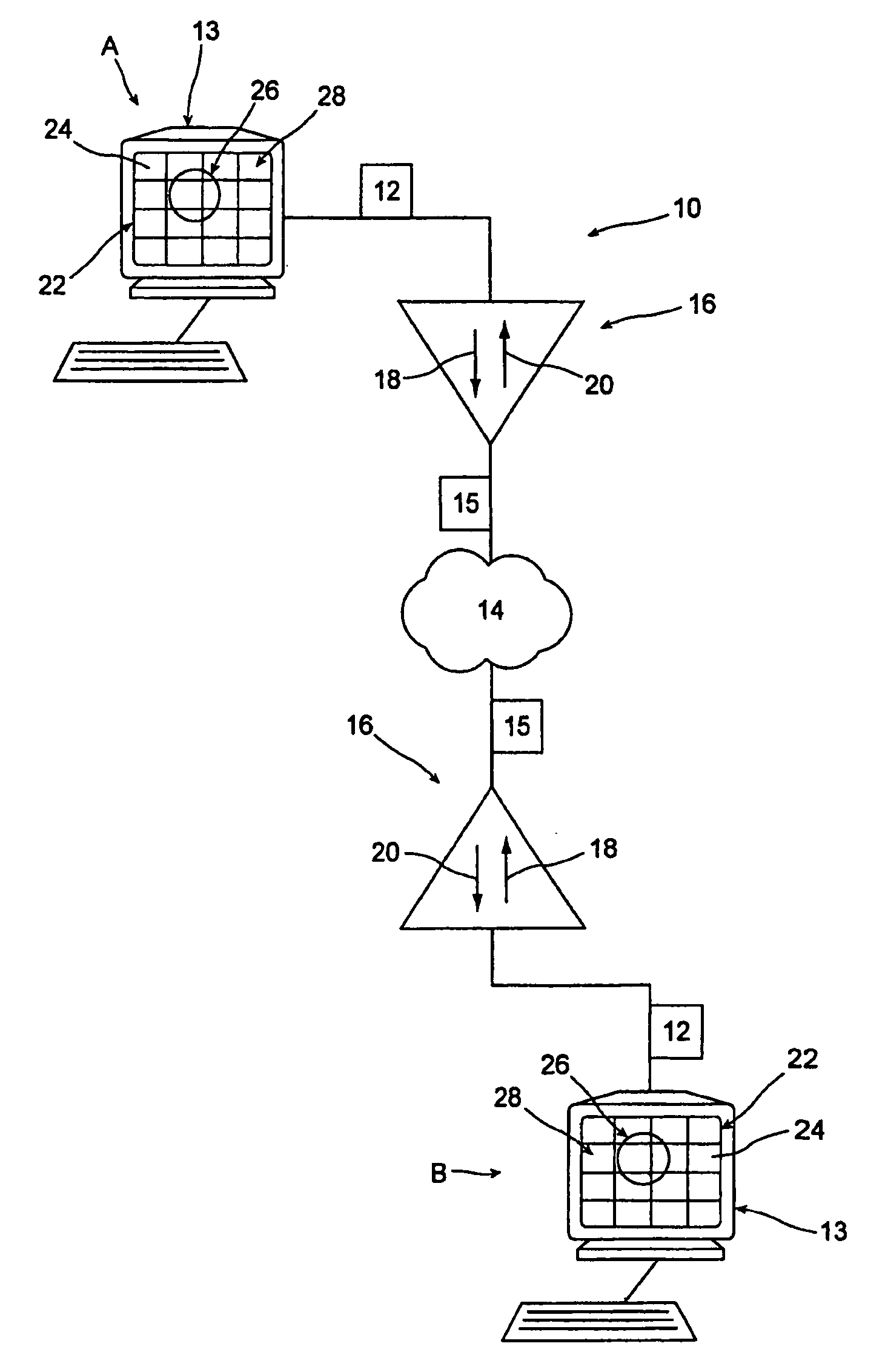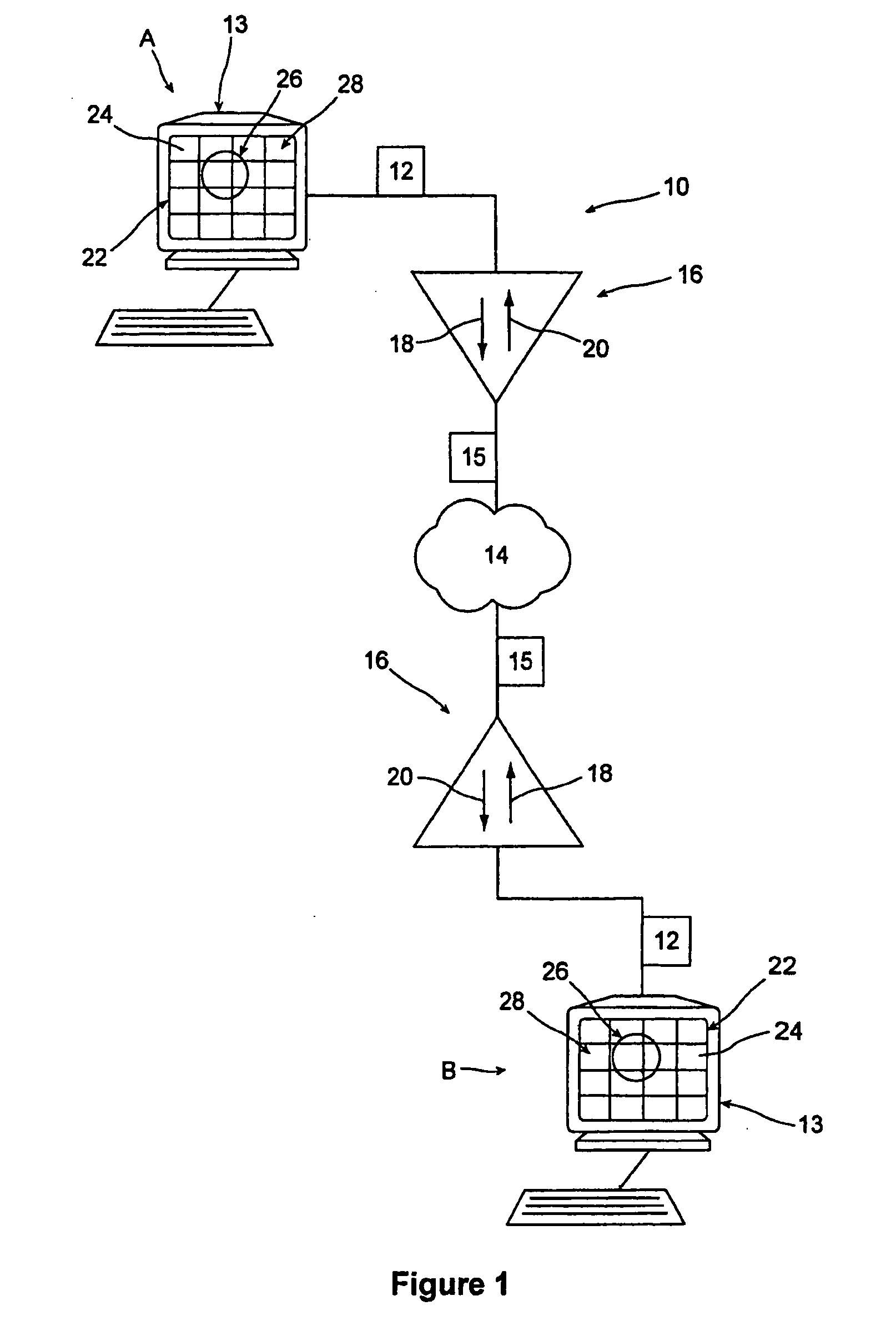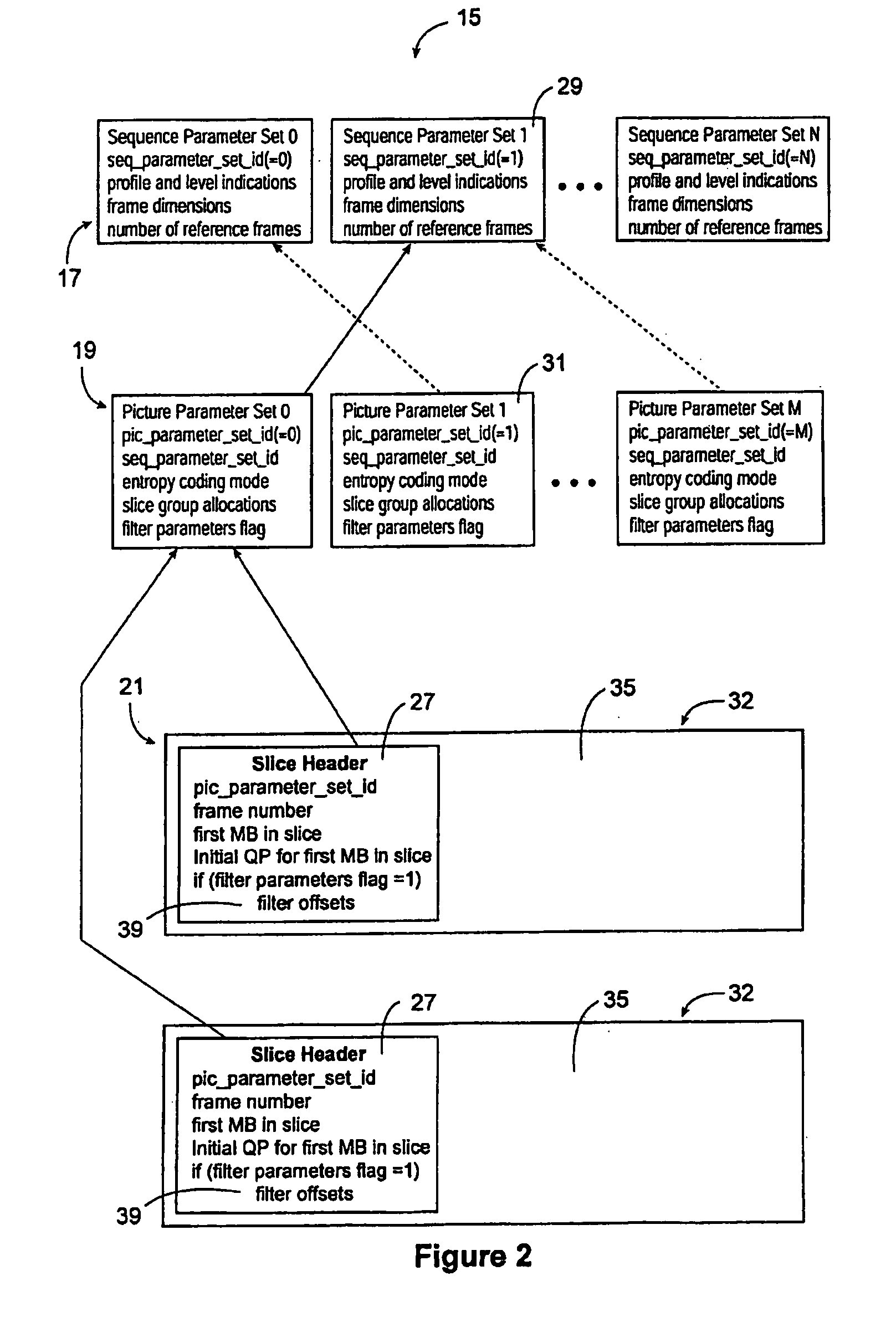Low-complexity deblocking filter
a filter and low-complexity technology, applied in the field of video coding, can solve the problems of affecting the quality of the overall video image, and the reference frame used for generating predictions for the coding of subsequent frames will contain blocking artifacts, so as to minimise coding artifacts, minimise coding artifacts, and minimise coding artifacts
- Summary
- Abstract
- Description
- Claims
- Application Information
AI Technical Summary
Benefits of technology
Problems solved by technology
Method used
Image
Examples
Embodiment Construction
[0054] Referring to FIG. 1, a video conferencing system 10 used as an example of a video transmission system has participants A and B that exchange video data 12 between monitors 13, formatted as a compressed bit stream 15 over a network 14 (such as but not limited to the Internet). Each participant A, B has a video processor 16 having an encoder 18 for encoding transmitted video data 12 and a decoder 20 for decoding the received bit stream 15. Each image frame 22 displayed on the monitors 13 is made of a series of macroblocks 24, such as but not limited to a block of 16×16 pixels, representing (for example) an object 26 which moves over a background 28 (for example a person giving a presentation while standing in front of a backdrop). Accordingly, the processors 16 coordinate the display of successive frames 22 on the monitors 13, as the video data 12 is communicated between the participants A, B, which can include applications such as video conferencing. It will be appreciated rec...
PUM
 Login to View More
Login to View More Abstract
Description
Claims
Application Information
 Login to View More
Login to View More - R&D
- Intellectual Property
- Life Sciences
- Materials
- Tech Scout
- Unparalleled Data Quality
- Higher Quality Content
- 60% Fewer Hallucinations
Browse by: Latest US Patents, China's latest patents, Technical Efficacy Thesaurus, Application Domain, Technology Topic, Popular Technical Reports.
© 2025 PatSnap. All rights reserved.Legal|Privacy policy|Modern Slavery Act Transparency Statement|Sitemap|About US| Contact US: help@patsnap.com



